Any representative of the kingdom of Neptune somehow gravitates towards thickets of aquatic vegetation - a fish table and a house. It is easier for juvenile fish among plants to hide from predators; right there, together with adults, the “small fry” finds food for themselves; in the very heat, many species cool off among the thickets of reeds and cattails, where the water temperature is always slightly lower than outside ...
The role of aquatic plants in the life of aquatic inhabitants is enormous and it is difficult to overestimate it.
Variety of aquatic vegetation
Higher aquatic plants in any reservoirs perform very important functions. Hara, cladophora, ulothrix, poisonous ranunculus, marigold, three-leaved watch, arrowhead, cattail, killer whale, egg-pod, water-color and many other plants growing under water, on the surface of reservoirs or in shallow waters - a refuge for aquatic animals, a substrate for spawning of phytophilous ( "plant-loving") fish, a natural filter between the watershed and the reservoir.
In addition, vegetation plays an important role in the process of self-purification of reservoirs, rivers, ponds, it is a competitor of algae, which causes water "bloom". In shallow areas of reservoirs overgrown with reeds and reeds, waterfowl and marsh birds breed and feed ...
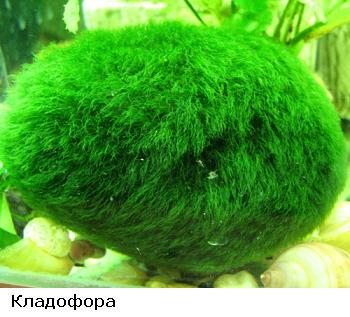
In the seas and oceans, aquatic plants often grow around coral reefs, protecting them from ocean water pollution (plants serve as a natural filter, absorbing pollution). Aquatic grass roots slow down erosion, helping to stabilize coastlines.
Aquatic plants can reach a length of several centimeters to tens of meters. They form real sea meadows in coastal waters from the Arctic to the tropics. Near the east coast of North America, there are the largest underwater pastures with an area of several hundred square kilometers. Underwater grasslands grow in Australian coastal waters. One such meadow near Adelaide covers an area of 4000 km 2 , and this meadow is over a thousand years old.
The flora of the Dnieper reservoirs includes more than 1000 species of plants, of which about 200 species are purely aquatic or "water-loving". Below is a description of some plants that are of no small importance in the life of fish.
Rogoz (Kuga)
Cattail is a plant with a dense and strong stem surrounded by broad leaves. It is topped with a velvety dark brown cob (often called a "rocking chair") with ripened fruits. This plant is sometimes incorrectly referred to as bulrush.
On reservoirs in cattail, crucian carp, roach, rudd, carp are perfectly caught.
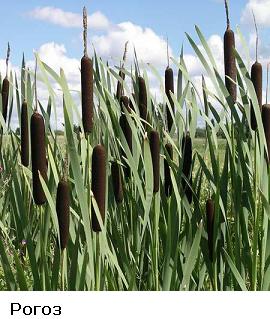
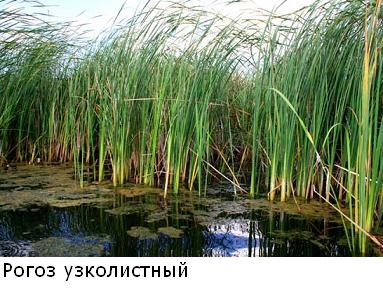
Duckweed is a tiny free-floating plant. On the surface of stagnant water in lakes and ponds, duckweed often forms a continuous light green coating.
Due to its high protein content, duckweed can compete with legumes. Therefore, both waterfowl and various fish enjoy it with pleasure.
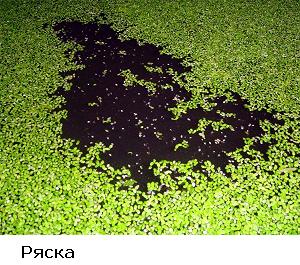
reeds
Reed - has a long smooth stem of dark green color, which is completely devoid of leaves. Often forms continuous thickets in the water near the shore. At the bottom, the stem reaches the thickness of a finger. In the upper part, a brown inflorescence is distinguished, consisting of several spikelets. The length of the reed reaches five or more meters.
The reed stalks are porous, filled with a mass similar to the lightest foam. The plant is densely penetrated by a network of air channels.
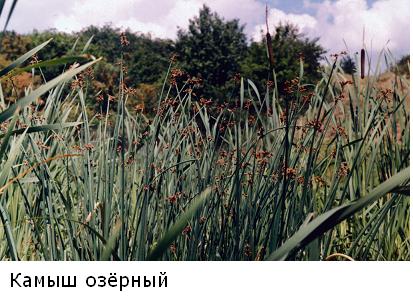
Unlike reeds, reed stems from below and to the very top are covered with flat, linear-lanceolate, up to 7 cm wide, with sharply rough leaves along the edges. At the top of the stem, a panicle 20-50 cm long is distinguished. Inventive anglers make wonderful light 3-4-meter rods from individual dry reeds.

Elodea is often called the "water plague" because of the ability to grow rapidly and "capture" the free water area. Elodea is historically "not our" plant, it came to us from North America, having mastered the reservoirs of Western Europe along the way.
In the fishing literature there is a statement that the fish avoids the dense thickets of elodea and cannot be caught there. However, it is not. "Water plague" eats grass carp and some other fish with pleasure.
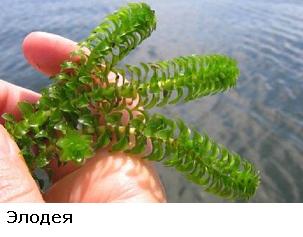
Thread, or silkworm
Filament is a bright green filamentous algae. Its strands are attached at one end to a pile, stone, driftwood or other underwater objects and freely "rinse" or flutter in the current. With a strong overgrowth of the reservoir, the thread floats to the surface, forming vast areas of green mud. This plant is loved by many species of fish.
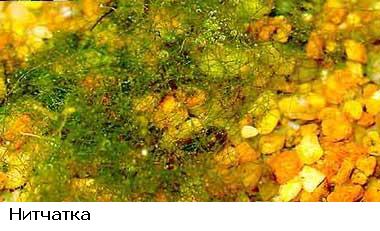
Buckwheat amphibian
Amphibian buckwheat is a deep-water plant, somewhat similar to land-based buckwheat, with a long cord-like stem. As a rule, it grows at a depth of 3-4 meters.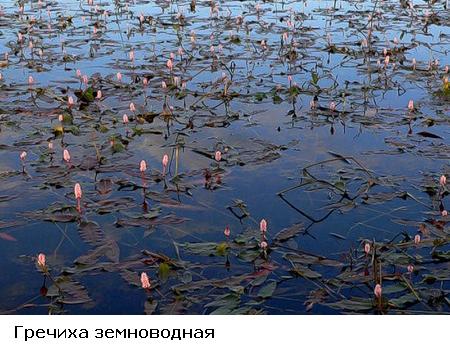 Hara is an underwater plant with thin stems with whorls of leaf-like needles. Sometimes the hara can form entire underwater meadows. This plant especially loves calcium-rich water.
Hara is an underwater plant with thin stems with whorls of leaf-like needles. Sometimes the hara can form entire underwater meadows. This plant especially loves calcium-rich water. 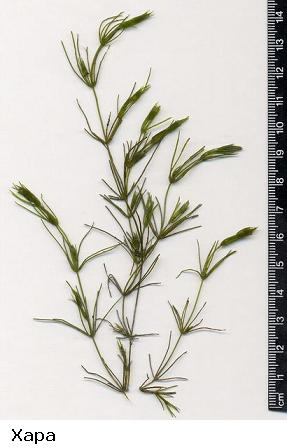
We determine the depth of the reservoir ... by plants
According to the nature of the aquatic vegetation, the fisherman can quite accurately (provided that he can distinguish at least cattail from reeds) judge the bottom topography.
In the coastal belt, dark green sedges, milestones, and poisonous ranunculus find favorable living conditions. Near the water itself, a continuous carpet sometimes forms a marigold.
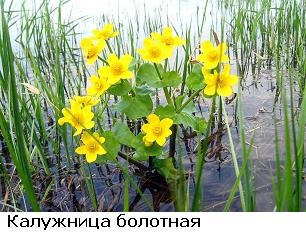
0.5-1.0 meters. Amphibious plants grow on the border of water and land: three-leafed watch, arrowhead, thickets of chastukha, succession, horsetail, cattail. 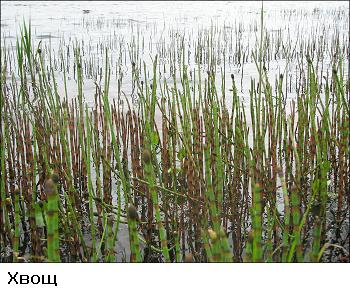
1.0-1.5 meters. The next belt is made up of half-submerged plants: manna, sedge, water buckwheat grow on shallows with depths of up to one meter. Ponds and hara settle somewhat deeper - at a depth of 1-2 meters. 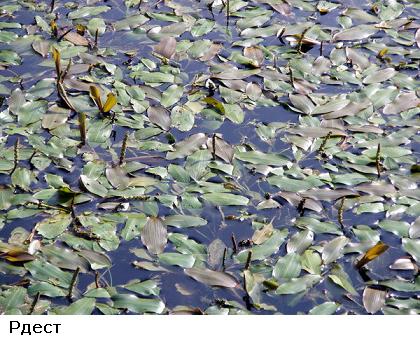
1.5-2.0 meters. Kuga (lake reeds) and reeds in reservoirs with variable level regime grow at depths of up to 2 meters, in rivers and lakes - up to 1.5 meters. 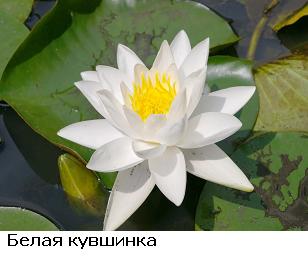
2.0-3.0 meters. This is a belt of plants with leaves floating on the surface: a white water lily, a yellow capsule, pondweed, amphibian buckwheat, water paint. The egg capsule and the white water lily (lovers of clean and running water) grow at depths of up to 2.5 meters in rivers and lakes, and up to 3 meters in reservoirs. 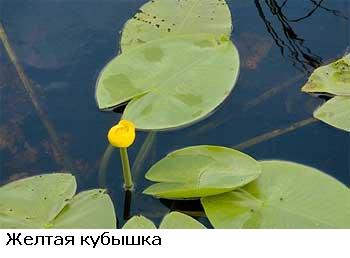
3.0-4.0 meters. Chara algae grow at depths up to 4 meters - hornwort, urut, elodea (holidays on the beaches are well acquainted with these plants). Although the most dense thickets are observed at a depth of one and a half meters. 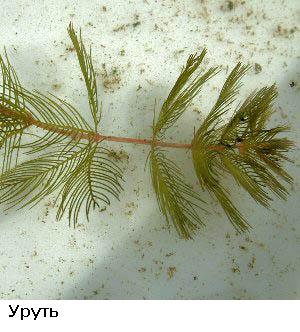
4 meters and deeper. Deeper than 4 meters on the reservoirs, hard vegetation is scarce, soft vegetation is found in small "bushes". 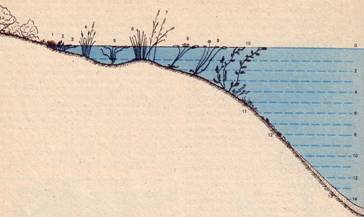
Every fish loves "their" plants
Different types of fish prefer "their" vegetation. Crucian carp and tench like to feed in thickets of sedge and cattail, often caught at a depth of 20-30 cm. Perch, roach, rudd settle near reeds and reeds, often at a depth of 1-2 meters pike stands in ambushes. In rivers and lakes, roach and rudd feed among egg-pods; thickets of uruti are inhabited by a variety of fish, both peaceful and predatory.
There are practically no adult fish among the shoots of the hornwort. The larvae of aquatic insects - the food of fish - do not settle on the leaves of this plant "due to" the release of a tannin by the plant - tannin. In addition, in the scientific literature there is a statement that the fine pollen of the hornwort during its flowering enters the gills of fish with water and clogs them.
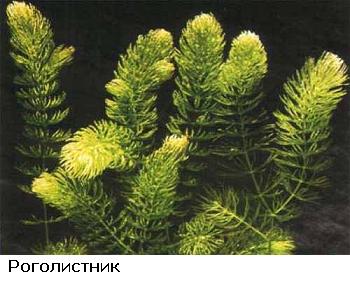
There are a lot of adult fish and "fish" in thickets of pondweed and urut, where she finds plentiful food, spawns and successfully hides from predators. Common carp often spawns on thickets of pondweeds, where the saturation of water with oxygen both day and night is much higher than in the surrounding open areas of the reservoir.
All daylight hours in summer and early autumn, you can catch rudd, roach, tench, dace, crucian carp and a small carp in the windows between the leaves of water lilies, on the border of reed and cattail thickets.
Observant anglers have noticed how many fish sometimes gather in late autumn and winter in horsetail thickets. It is believed that these plants have the ability to alkalize the water around them. In addition, in winter, water is enriched with oxygen coming from the air through the hollow stems of plants.
White water lilies and yellow capsules are not only outwardly beautiful. Various invertebrates live on the leaves of plants. The large round leaves themselves serve as shelter for the fish in hot and sunny weather. In addition, there is a lot of starch, protein and sugar in the rhizomes of water lilies; roach, rudd and perch like to feast on them.
In shallow water, arrowhead thickets attract "white" fish; carp, chub, ide, and roach feed here. Predators also hunt here. Arrowhead shoots have one and a half times more starch than potato tubers!

What do vegetarian fish eat?
According to the nature of the nutrition of phytophage fish ("plant-eaters"), they can be divided into three groups:
* 1. Fish, in the diet of which higher plants are of exceptional or predominant importance.
* 2. Omnivorous euryphage fish, in the diet of which higher plants are more or less equal in importance with animal food.
* 3. Omnivorous euryphage fish, in whose diet higher plants play the role of additional food.
It is customary to refer to the first group such species as white carp and rudd.
juveniles cupid at the first stages of active feeding, it consumes small planktonic animals and feeds on worms. Adult fish eat various plants: aquatic submerged and semi-submerged, and in some cases - terrestrial. The most consumed plants (at any water temperature) are filamentous and narrow-leaved pondweeds, elodea, reeds (young shoots), and sexually mature grass carp manage to eat plants even at a height of 50-70 cm from the surface of the reservoir, jumping high out of the water.
DOES NOT use for food, white grass carp is pierced-leaved (old), shiny and reddening, egg capsule, pure white water lily, rezukha, burrweed, pemphigus, buckwheat, large cattail, sedge, susak, charophyceous algae.
Consequently, it makes no sense for the fisherman to watch for cupid near these plants.
Rudd considered a transitional species from purely herbivorous fish to fish with plant and animal nutrition. Until the age of two, these fish still feed on invertebrates and plants, and when they reach 8-10 cm in length, they almost completely switch to plant nutrition (higher plants, filamentous algae, diatoms).
The rudd spends its entire life near the thickets of vegetation, practically without leaving them. Experienced anglers know that catching rudd, say, on a river bed is a real nonsense.
In reservoirs where there is little vegetation, rudd grows poorly. Favorite plants for this fish are coastal reed, elodea, hornwort.
In summer, the rudd fasts. Almost all the warm season, she prefers vegetarian food. That is why its meat becomes bitter in taste.
The herbivorous period almost stops in the rudd before autumn, when larvae of mosquitoes and other insects, aquatic invertebrates appear in its diet more and more often. 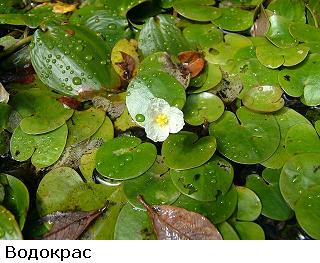
The second group (euryphage fish, i.e. species with a wide food spectrum, omnivores) includes carp (carp), chub, ide, roach (ram), tench.
Experienced anglers know, for example, the roach's predilection for silkworm (bright green algae, which is often called threadbait). Floaters and conductors use it as an excellent bait for heavy roaches. In general, some researchers noted up to 45 food objects in the diet of roach, among which the most beloved by fish are fouling algae, pondweed, and urut.
Large roach almost completely switches to feeding on animal feed - mollusks.
adults carps almost omnivorous, they use a variety of plant and animal food for food: seeds and young shoots of aquatic plants (reed, buckwheat, urut), mollusks, crustaceans. In recreational literature, this majestic fish is often referred to as the "water pig" due to its ability to consume a variety of animal and vegetable foods without overdoing it.
spring carp and carps they gladly eat tender shoots of cattail, in summer the share of plant food in their diet is insignificant, although from time to time these fish feed on hara, diatoms and green algae.
By the way, it was found that for normal development
Podust- periphyton-eater - it feeds on aquatic inhabitants attached to the stems and leaves of plants: rotifers, insect larvae, worms, mollusks, lower algae. As part of the food of the podust, one can find silt, higher aquatic plants (urut), although the latter are not the main, but additional food.
carp prefers animal feed, although it feeds with pleasure on filamentous algae in summer, "grazes" in cattail thickets, pecking aquatic invertebrates from the stems. Hornwort, pondweed and urt are used by silver carp as additional food.
Large specimens of benthos-eating and mollusk-eating fish: carp, ram, bream, silver bream, blue bream love to feed at depths from 3 to 10-12 meters, where the bottom of Eastern European and southern reservoirs and rivers is almost entirely covered with a carpet of zebra mussel - a shell mollusk.

Chub during the period of open water, it feeds mainly on aerial insects, sometimes "biting" on the shoots of pondweeds, plucking the mulberry.
bleak, despite the predominant feeding on animal feed, sometimes pays attention to higher aquatic plants; in reservoirs, it uses elodea and pondweed as food when there is a lack of food (great competition).
river perch, paradoxically for anglers, is by no means an absolute predator. In its diet, in addition to a small proportion of air insects, vegetation is also found. In the reservoirs of Kazakhstan, in the lakes of the Urals and Trans-Urals, for example, in large perches (weighing more than 600 g), the frequency of occurrence of plants (cattail!) reaches 18%, and in the floodplain reservoirs of the Middle Volga, ichthyologists caught perches, in the intestines of which higher plants amounted to 36 % by weight. Moreover, perch plants ate in the presence of a huge number of juvenile fish!
But not only in distant lands perch "vegetarian". According to researchers, small perches in the Dnieper and Dnieper reservoirs feed on plants, fish eggs and invertebrates. Although scientists recognize that plants in the food of these predators still play an additional role.
It is hard to imagine our reservoirs without the familiar reeds and reeds, the water column and the bottom of the rivers without pondweed, arrowhead or silk grass. Aquatic plants for all fish, without exception, are a reliable home and a satisfying table. And an inquisitive fisherman, who knows fish addictions, will always come home with a rich catch! ..
